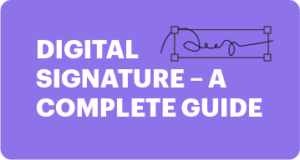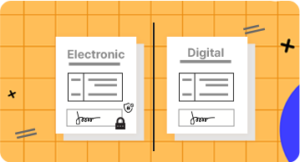How Digital signatures Work?
Digital signatures, a type of electronic signatures/ e-signatures, are like electronic fingerprints. Unique to every person, like our pen-paper signature, digital signatures accord unique identities to every entity/ person. These apply advanced mathematical algorithms used to validate the authenticity and integrity of digital messages. For instance, a credit card transaction, email, digital document and so on.
Electronic signature companies like MSB Docs use a special protocol called Public Key Infrastructure (PKI). PKI, consisting of the policies, standards, people, and systems, enables the distribution of public keys. These protocols help validate the identity of the involved entities.
The advanced mathematical algorithm of the e-signing software/ solution assigns a unique identifier to each signer. This unique identifier is a fixed-length string of numbers and letters known as the cryptographic hash or the hash function. Each hash is unique to the message/ document in question. If any part of the document is changed, so will the cryptographic hash.
The cryptographic hash generates two keys – one public and one private. Data encryption is done by the private key while data decryption is done by the public key. It is this key pair system that enables the involved entities to ensure confidentiality, integrity and authenticity of transactions.
When an entity signs a document electronically, the signer’s private key is used to create and securely store the signature. The data is then encrypted by the public key. This encrypted data is the digital signature which is also time-stamped. Any changes to the document cause the digital signature to be invalidated.
The document is sent to the receiver with the sender’s public key to decrypt the data. A new cryptographic hash is generated on the receiver’s end. If the sender’s public key is unable to decrypt the signature, it indicates that the document has been changed or that the signature does not belong to the sender.
When both cryptographic hashes are compared, they must match. Else, the document has been tampered with.
Why are Digital Signatures Necessary?
First and foremost, digital signatures ensure that the contents of digital messages/ documents are not altered or tampered with during transit. It, thus, helps businesses to effectively protect information, avoid impersonation problems and ensure heightened information security.
This type of e-signature authenticates the signers, displays the consent of signers and provides insight into the status and origin of the message. Digital signatures are especially important for industries where the authenticity and integrity of digital communication are critical. For instance, banking and finance, software distribution and so on.
They increase the credibility and transparency of online communications between businesses and their end-users/ business partners/ vendors. Trust is guaranteed in such transactions.
Another key benefit of using this form of e-signature is that it enables signing to happen remotely. For instance, the involved parties do not have to physically meet to get contracts signed.
In a number of regions around the world, digital signatures are considered legally binding and are as valid as any handwritten signature. All you need to do is choose an electronic signature company that is universally accepted. The electronic signature company must meet the legal standards of the country in question, as well as, the regulatory standards of security and compliance.


